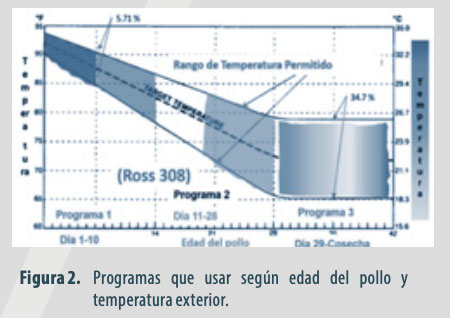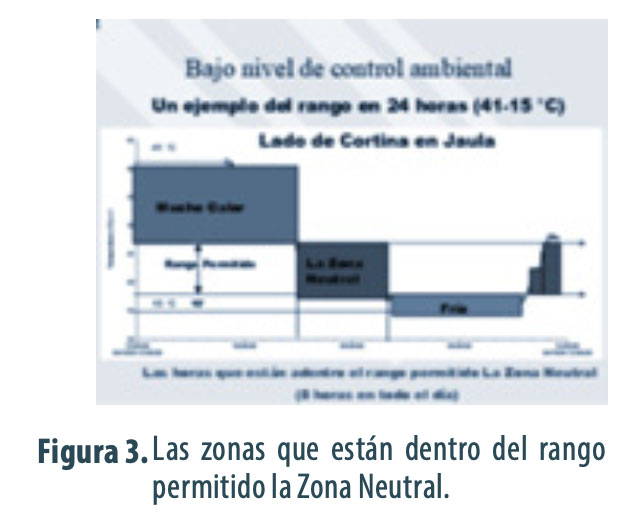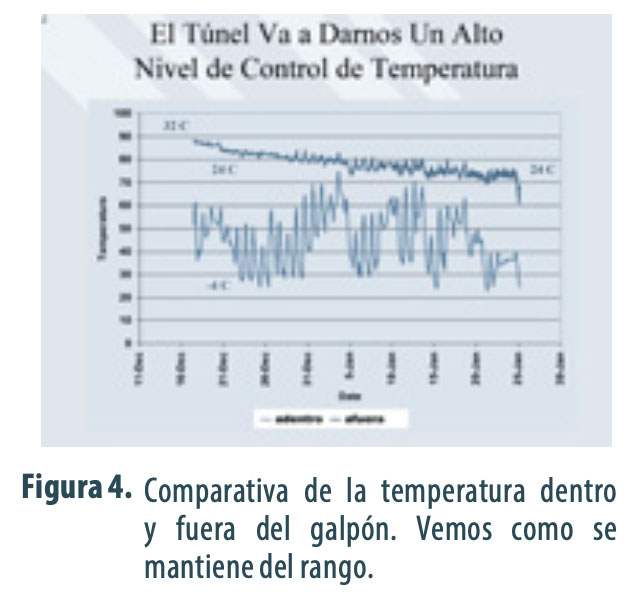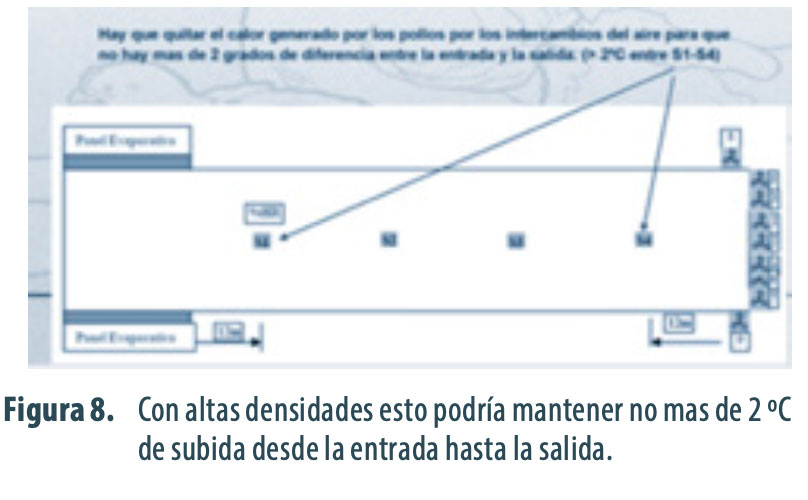F. Joseph Lockinger, was in charge of the presentation on “The most efficient house in a poultry farm” during the LPN Congress 2018.
Controlled environment in Latin America.
When we think of controlled environment broilers, we have to think of two ages:
- The first week of the chick’s life.
- The last week before harvest.
Maximize Genetic Potential
The current lines of birds are the product of the work of genetic houses and increasingly require more restricted temperature ranges for optimal development. This invites us to see the controlled environment as a complement to the effort of the genetic companies.
This gain in size also implies other requirements, such as maintaining temperature, humidity, and other factors within very narrow ranges to achieve maximum performance.

The range of the neutral zone according to the age of the chicken
We must maintain a temperature close to the average temperature (target) shown to take advantage of all the genetic potential. To achieve this, different programs must be managed according to the age of the chicken and the external environment. Here is a guide that might help us:
It is essential to develop different programs for different ages and climates. This is fine for minor adjustments, but companies must standardize house controller programs to avoid various management problems. But, this circumstance is more critical in companies with a higher staff turnover.

Program 1: Brooding
The chicken is between 1-10 days old.
In “Program 1,” we will focus on the ideal temperatures, reaching them with the brooders, minimum ventilation, and ventilation power.
During this age, we use the vents to avoid generating wind on the small chicken. The vents will work with the first and second static pressure.
- The first static pressure should be calibrated to offer between 1100-1200 ft/min.
- The second static pressure should offer about 700-800 feet per minute, with tunnel ventilation being able to help. This allows us to open the tunnel when they are using the second static pressure and thus renew the air.
- At this age, we can quickly cool the chicken’s environment, being more careful since we do less damage to the chicken with heat than with cold.
Program 2: Growth
The chicken is between 11-28 days old.
In “Program 2,” we will focus on the ideal temperature, and we achieve this thanks to the minimum ventilation, the power of ventilation, and the tunnel ventilation.
When we use the vents during this period, we use the second static pressure most of the time. Also, since the chicken is more significant, we can use natural ventilation and tunnel when necessary.
In this program, we will use two extractors for minimum ventilation. The difference between the fan starts being 0.6oC. We can even use evaporative panels for cooling, but in a very gradual way, never aggressively. Also, we can use the panels when we have between 90-100% of the extractors on. This will help us lower the ambient temperature without using airspeed as a tool.
Program 3: Growth
The chicken is between 28 days old to the slaughtering age.
In “Program 3,” our objective will be to lower the temperatures to keep the bird under maximum comfort so that it does not stop eating. We usually will not use the power of the ventilation (a little at night in some places), and we work with tunnel ventilation all night.
In this program, the difference between the fan starts is 0.4oC. In addition, we can use evaporative pads more aggressively to lower the house’s temperature. Likewise, when 90 and 100% of the extractors are on, we can also use the panels.
Also, last week we used the so-called “bird cooling at night” to improve conversions. We do this by setting the extractors with a clock or lowering the ideal temperature.
With a controlled environment, we must fulfill two essential parts.
- 1. A house that is well insulated. The walls and the ceiling.
- 2. A house that is well sealed. Minimum 0.2″ water column of static pressure.
Comparing environments
In the following image, we see a test carried out in a commercial egg cage where we see the temperature changes throughout the day (24 hours) in a shed without a controlled environment where it is observed that only in a very short period of the day was the temperature desired. In the 24 days, there were 8 hours when the neutral zone was inside.

In the graph below, we see how the temperature fluctuates outside the house and how it stays within the range that the bird needs inside the controlled environment house. They could see the chicken’s life with temperatures within the neutral zone.

But all this would not be possible without having a house made correctly. This means that we have incorporated insulating material in the ceilings and walls. On the roof, the “R” value should be between 15-19. To the walls, if you don’t put solid walls, at least put insulated curtains that give some insulation. Today with infrared cameras, it is easy to find the environmental problems of the sheds.

If it is not possible to put solid walls, the insulated curtains could support a lot, as the screen below shows—almost 6 degrees difference. The standard shade gives less than one degree of difference.
So if there is not so much heat input due to the construction of the house, we could only work with the heat generated by the birds. On many occasions, we are over ventilating the chick due to construction problems but not the heat the bird feels.
When the chicken is already significant, we must eliminate the color that the bird itself generates. If we don’t remove that heat due to lack of ventilation, the daily gain of the chickens will drop. They won’t eat what they should because they feel hot. So we work with speeds today of 700-800 ppm.

The second important part for large chickens is the evaporative pads. We know that the evaporative pads are not very useful when humidity is above 80% outside the house.
A common problem with evaporative panels is their maintenance due to poor water quality or hardness. When humidity outside the house is less than 60% RH, evaporative pads can lower house temperatures by 8-10oC
At this point, we must remember the temperature-humidity binomial. When the temperature rises, the humidity drops, and therefore during the day, due to an increase in temperature, the humidity is lower, which makes the use of panels more recommendable.
To put all that in more practical terms, the list below could serve as a guide.
Controlled Environment Rules
- More than 750 ft/min airspeed.
- One complete air change in less than 40 seconds
- Not more than two degrees difference from the entrance to the exit of the house.
- They should have a good seal on the booth. (>0.20 p.e.)
- They should not have more than 0.20 static pressure.
- They should have enough vents to work with half the fans.
- They should look for a difference between the maximum and minimum of no more than 6 degrees in 24 hours with large chicken.
